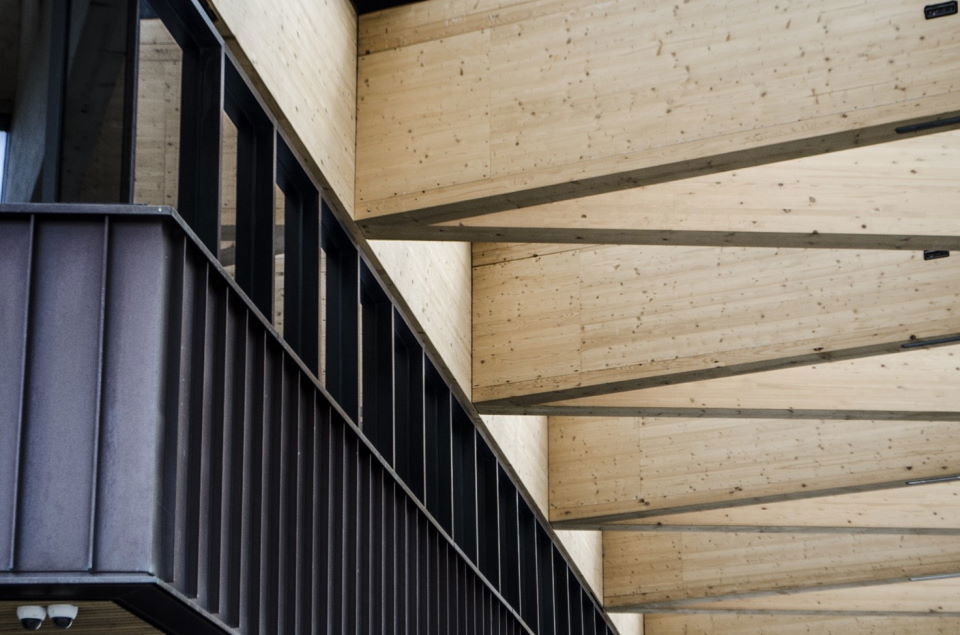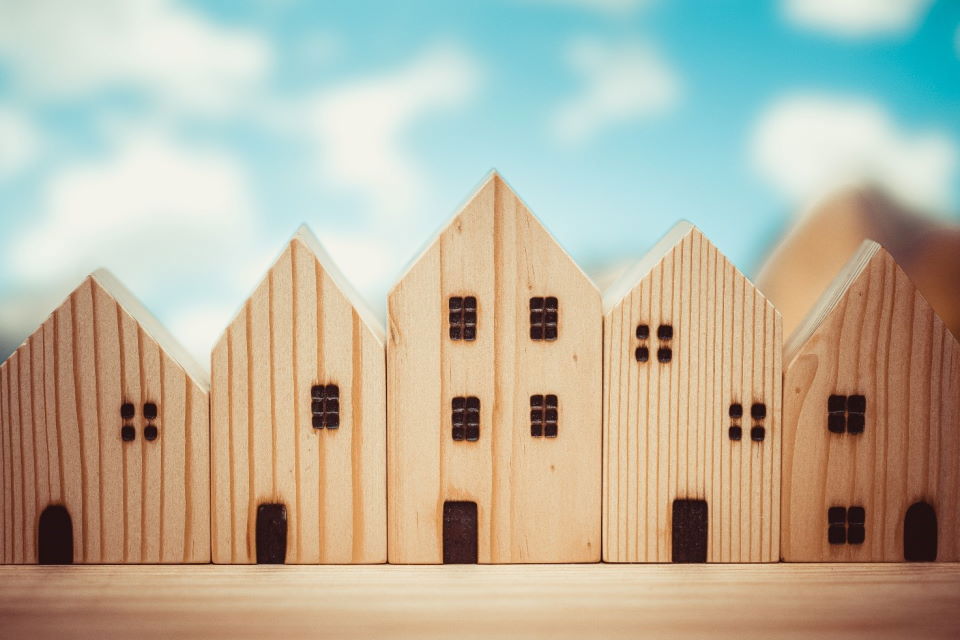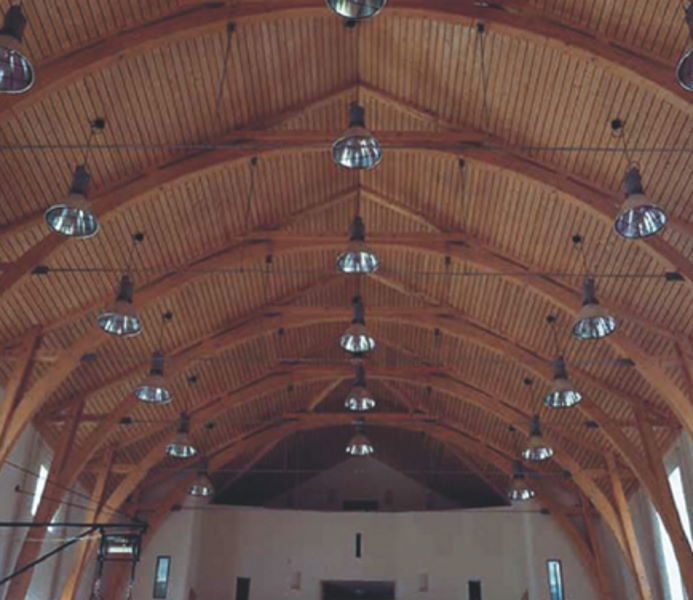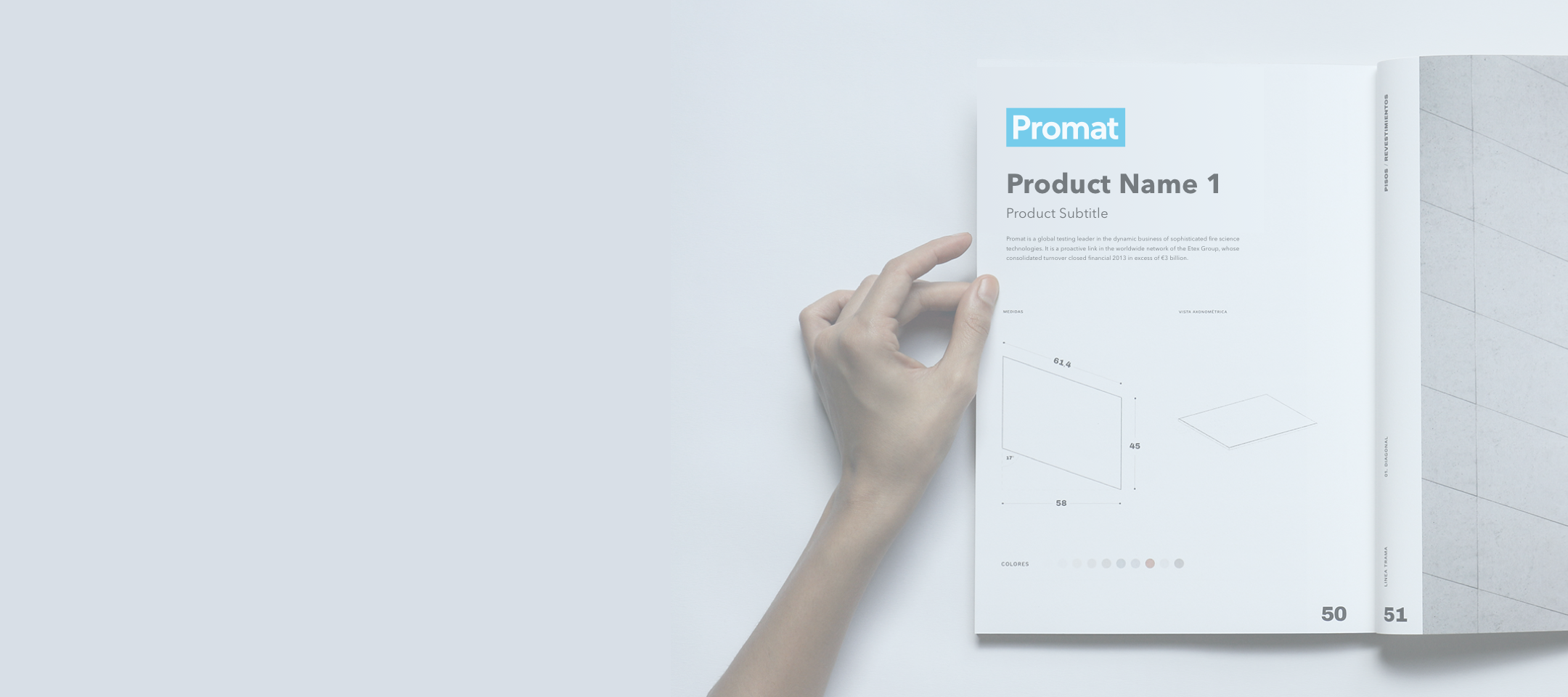
Advantages and disadvantages of wood as a building material
Wood is an organic material classified as a natural lignocellulosic polymer that has been used as a building material for centuries. Wood has many advantages, such as workability, excellent mechanical performances versus mass, corrosion resistance, and an aesthetic appeal, and two basic disadvantages: It needs constant maintenance, and it burns.
How does wood burn?
When burning, wood develops a protective outer layer that can protect the substrate. Such a layer, commonly called char, reduces the supply of oxygen and, thanks to its extremely low conductivity, prevents the increase of temperature of the inner layers, slowing down the burning process of the core of the wooden elements (on average, 1 mm/min.). Because of this characteristic, a structural timber element can resist fire for a long time, generally much longer than steel or even concrete of the same dimensions can.

Fire reaction and classification of wood
In terms of fire reaction, wood is usually assigned to class D according to the EN 13501-1:2018 standard, which means it is highly combustible and able to significantly contribute to the development of a fire in a building.
How do modern fire retardants work?
The use of fire retardants may contribute significantly to reducing the risk associated with the outbreak and propagation of fire and limiting its spread onto other elements. Modern fire protection systems may substantially lessen the fire parameters in the following ways:
- reduce fire susceptibility
- extend the time of ignition
- reduce the speed of flame propagation and the rate of material burning
- reduce volumetric size and rate of heat release during the fire
In other words, these systems contribute to the inhibition of fire development and increase the evacuation time.
Fire retardants for wood and timber
According to the method of application, fire protection substances and systems are classified into two categories:
- impregnating substances penetrating the wood, usually in the form of aqueous solutions or in an application with other solvents (e.g., liquid NH3)
- surface-active coatings, forming a protective layer on the wood surface, in the form of varnishes, paints (often expanding), foils, fibers, or thin fire barriers
If the wood-penetrating agents are applied by painting or spraying, their effectiveness is usually lower than that of coating agents.
Some protective materials can raise the fire reaction rating of timber to class B - s1, d0, which is the best class for timber according to the Euroclass.
What does fire resistance of wood mean?
In general, regardless of the fire detection and extinguishing system applied, the load-bearing element should be effectively protected against fire if potential failure is expected. Timber is a special case because it is always necessary to lessen the fire reaction, slow down the start of combustion, increase the resistance to the fire, and improve the load-bearing capacity during the fire exposure.
More precisely, fire resistance indicates the time during which a structural or separating element retains its properties (insulation, integrity, and load-bearing capacity, depending on the element’s function). Timber load-bearing elements, such as beams and columns, must withstand fire for a certain time till they reach the limit states, at which points they no longer function as designed. This time is expressed in minutes as R15, R30, R60, etc., where R refers to the retention of the load-bearing capacity for the specified period, indicated in minutes.
How to prolong the load-bearing capacity of wood?
For the wooden structural element, the main reason for losing load-bearing capacity in a fire is the reduction of the cross-section due to the burning of the timber. On the market are several systems which provide certain insulation and/or reduce the start of charring:
- cladding around a wooden structure (e.g., fire protection boards)
- non-reactive insulation (e.g., mineral wool)
- spray rendering or mortar (application on the surface)
- fire protection coating (thermal barrier coating and/or intumescent paint)
These protective solutions do not change the chemical properties of a loadbearing timber element, but they provide only a sort of protective casing, which can reduce the transfer of heat into the protected element, thus inhibit its thermal degradation, delaying at the same time ignition and slowing down the burning process.
Various fire resistance mechanisms and their impact on wood
Mechanisms of fire resistance performance may be classified according to their impact on the wood, for example, the following:
- slowing down the increase of the wood temperature
- producing gaseous protective coatings
- generating a non-flammable carbon coating or a silicate layer
- reflecting thermal radiation (screening)
- proving a physical barrier between oxygen and the timber layer
Cladding the wooden structure using fire-resistant boards
A very popular and effective fire protection method providing acceptable aesthetic features is the use of cladding made from special fire-resistant boards. These include calcium silicate, gypsum, cement-lime, or cement boards reinforced with fiberglass and various fillers. Such cladding may also be made from mineral wool panels.
Assembly time necessary for mounting such structures, however, is relatively long. Cladding usually requires a special support structure, mechanical fasteners (pins, screws, or clamps), and special temperature-resistant mortars and fillers (for sealing board joints).
Application of spray rendering or mortar
Spray rendering or mortar are applied on structures where the aesthetic aspects of the finishing are not fundamental.
Spray rendering and mortar may be applied in two ways. The first, so-called 'dry method' consists of combining and mixing the ready-made dry mass with water or a liquid binder additive in the nozzle of a spray gun. This method prevents loss of the sprayed material. The second, so-called 'wet method', consisting of mixing the dry substance with water, is applied using a pump-spray unit. The spray coating thickness can range from 10 to 100 mm, applied in several layers. The main disadvantages of such technology include:
- rough surface texture
- possible dirty marks on surrounding elements during the application
- insufficient resistance to weather conditions
Intumescent (reactive) coatings
Fire-retardant or fire-protective coatings are paints, varnishes, or impregnates that can lessen fire reaction and improve fire resistance and are considered a very effective method of protecting wooden structures against fire.
In the past, flammability of wood was reduced by immersing wooden elements in seawater (impregnation with sodium chloride) followed by painting with special paints containing additives of limewash or chalk, which have ignition-retardant properties. Currently, more modern systems, such as thermal barrier coatings, are most commonly used as coating insulation. In particular, intumescent coatings (known under the name 'reactive coatings') are special paints that expand at temperatures around 200 °C, forming a multi-cellular insulating layer able to protect the timber underneath.
When exposed to fire, intumescent coatings gradually carbonize, starting from the outer layers. Modern technology enables the expanding layer to increase to 50 times its original thickness, the efficiency of this solution is thus significantly improved.
The main advantages of this type of insulation are ease of application, minimum layer thickness, and aesthetic appeal.
What are the latest fire protection solutions from Promat?
Promat offers high-quality products designed for passive fire protection systems. Each product has a unique specification providing adequate solutions for various projects.
Promat owns the latest technology of intumescent paint for timber. Thanks to its fire resistance performance and high transparency, PROMADUR® reactive paint outperforms any similar substances.
The fire resistance of timber elements depends on their thickness, shape, material (type of wood, i.e., coniferous or deciduous, solid, glued, sawn, or chipped), wood density, oxygen availability, and quantity and quality of fire protection coatings applied. Depending on these factors, PROMADUR® increases the fire resistance class of wooden elements to 120 minutes (R120) or more.
PROMADUR® is also used to reduce the degree of flammability of wooden surfaces to the lowest possible class (B, s1 d0, according to the EN-13501 standard), which means it provides the highest possible fire protection class available for reactive coating.
To improve the mechanical properties of PROMADUR® (e.g., abrasion resistance) and to increase the resistance to moisture without lowering the fire resistance class of protected wooden elements, a one-component PROMADUR® Topcoat coating can be applied.

PROMADUR® is a state-of-the-art fire-retardant coating used as a fire protection for wooden structures.
PROMADUR® may be used in all types of buildings, such as hotels, schools, offices, public buildings, museums, and libraries.
PROMADUR® can significantly improve the fire resistance of load-bearing timber elements thanks to the very high charring time (delay of combustion) and the extremely low charring rate (speed of carbonization).
PROMADUR® has long durability (33-year test according to Czech protocol Arrhenia - 30 °C) without losing fire performance and without change in the color shade.
The main advantages of PROMADUR® include the following:
- high fire protection - resistance class up to R120 or more, depending on the dimensions of the timber element
- the latest generation reactive fire-resistant paint (thermal-activated expansion paint), reducing the flammability of wooden elements
- increased fire resistance of wooden load-bearing elements (pillars, beams, ceilings, and walls) even with a single PROMADUR® coating
- high transparency (wood structure visible after application)
PROMADUR® can be applied on the surface of wood elements using a brush or roller (short-pile roller) or with an airless spray system for very large surfaces.
PROMADUR® is environmentally friendly because of its low VOC and no formaldehyde content.
This simplicity and ease of application and transparency make PROMADUR® a standard in passive fire protection systems.
Structural elements made from solid wood, chipboard, and plywood (minimum thickness 12 mm) protected with only 300 g/m2 PROMADUR® conform to fire reaction class B-s1, d0.
PROMADUR® Topcoat (approx. 80 - 100 g/m2) enhances moisture resistance and mechanical characteristics (including abrasion resistance).

